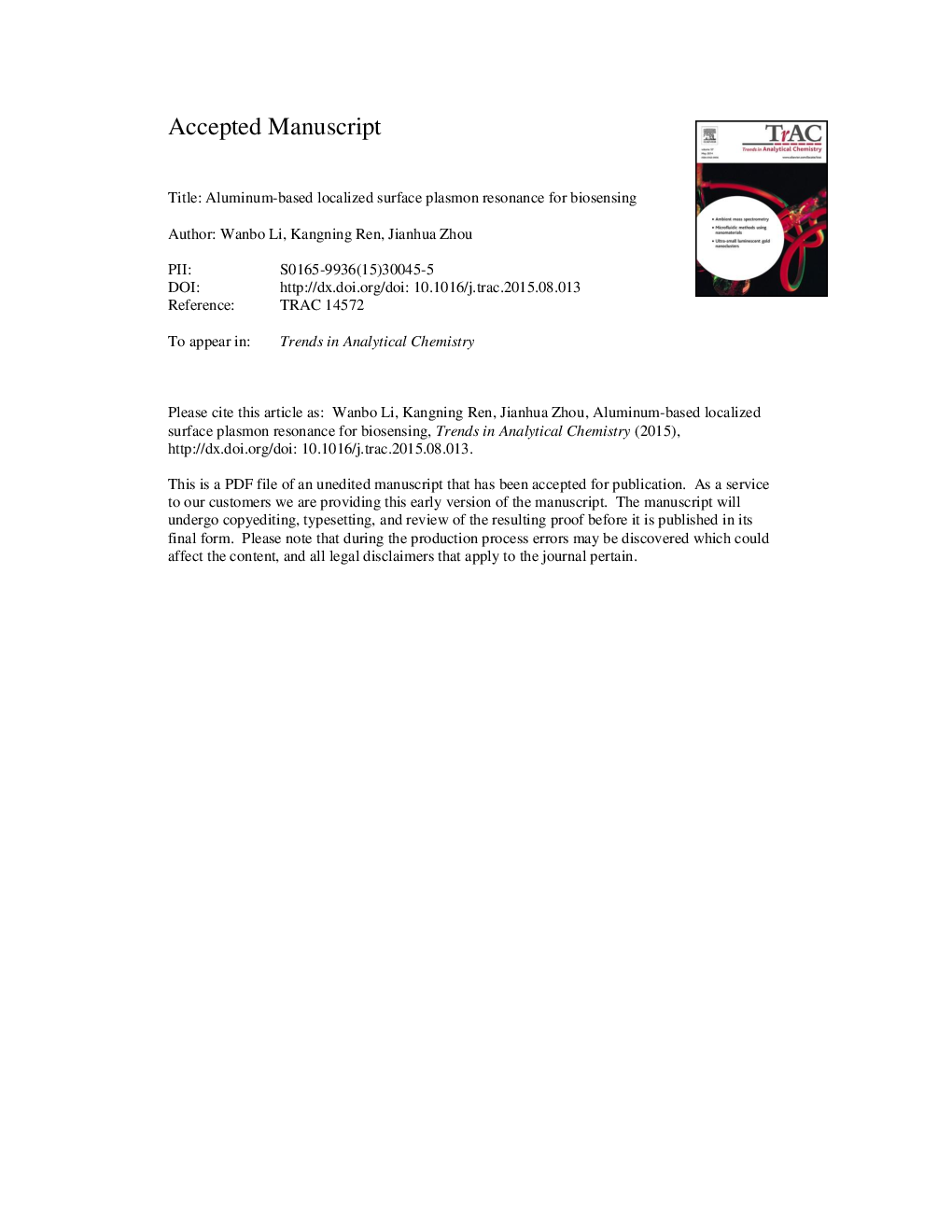| Article ID | Journal | Published Year | Pages | File Type |
|---|---|---|---|---|
| 7689047 | TrAC Trends in Analytical Chemistry | 2016 | 27 Pages |
Abstract
Aluminum-based localized surface plasmon resonance (LSPR) exhibits attractive properties including low cost, high natural abundance, and ease of processing by a wide variety of methods including complementary metal oxide semiconductor process, thereby making it superior to conventional LSPR involving noble metals. Moreover, the intrinsic property of the broad plasmon resonances of Al exhibited across the ultraviolet-visible-near-infrared wavelength region can be utilized on demand in refractive index biosensing, surface-enhanced fluorescence, and surface-enhanced Raman scattering. This review focuses on the recent developments of LSPR biosensing with aluminum nanostructures and related areas. Firstly, we introduce LSPR biosensing and the advantages of Al-based plasmonics. Then, we describe the different biosensing strategies employing Al LSPRs in detail. Subsequently, we provide an overview of various well-defined Al nanostructures and their fabrication methods. Finally, the future research trends of Al-based LSPR biosensing are highlighted and a conclusion with perspectives is given.
Keywords
Related Topics
Physical Sciences and Engineering
Chemistry
Analytical Chemistry
Authors
Wanbo Li, Kangning Ren, Jianhua Zhou,
